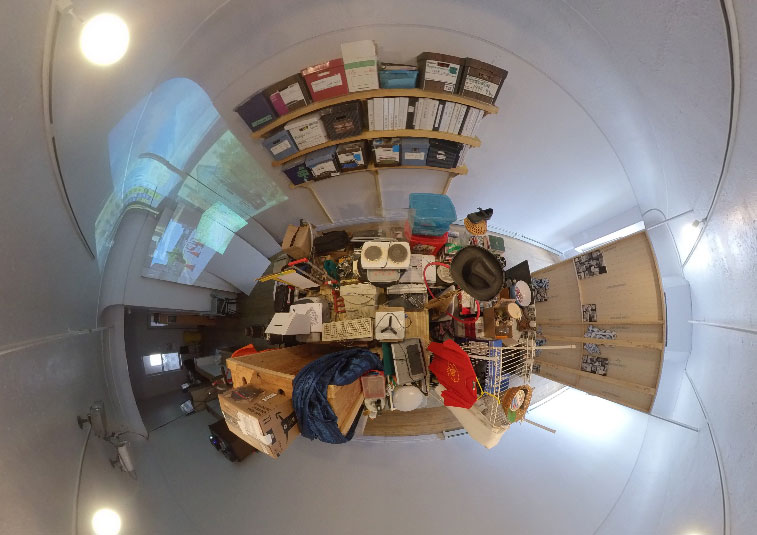Mining the Mind
June 28, 2018

Accompanying text
by Jamaluddin Aram
The same year that Galerie du Nouvel-Ontario (GNO) was founded in Sudbury, thousands of miles away, a collective of madrasa students captured the city of Kabul. The year was 1996.
This is a story of two beginnings. But the intentions and outcomes couldn’t be more different. In Sudbury, GNO opened its doors to breathe fresh life into arts, to give the artists the space and the recognition to create. In Kabul, the Taliban’s pickup trucks rolled into the city in the middle of the night. The next morning, when the early risers saw the newcomers, there was nothing special about them except that their eyes had a black contour, lined with coal; that some wore sandals and some walked bare foot; and that their music lacked all musical instruments.
With GNO, Sudbury opened to all practices in contemporary arts. With Taliban, Kabul closed to all practices in arts: music, dance, painting, drawing, film, television, kite-flying, theatre, boxing, even whistling. I was in Kabul then. I am in Sudbury now. Through reflecting on those two beginnings, I am connecting the narratives and highlighting the disparities in them.
My initial reaction to Lips of One Thousand Nine Hundred Ninety-Six Teachers, an exhibition by Patrick Cruz at GNO, compelled me to compare. The recklessly assembled art looked ugly when I first went to see it. I asked myself: “Is this art?” Patrick made a collage of unrelated items which had long been out of use. He piled them up in the middle of the gallery: stoves, computers, construction hardhats, boots, files and folders, magazines and books, crutches, ping pong balls, shirts, photo albums, etc. “I excavated [GNO’s] basement,” Patrick said. Disturbed by my reaction – which based on past experience often has an ignorant undertone – I went to talk to Patrick. I learned about his concept of memory and unearthing the past to make sense of the future. I learned that art, as a concept, can be subjective and fluid, that it can be unsettling and not pristine, that there’s much more going into creating art than the visible brushstrokes on a canvas, the rehearsed moves in a choreographed dance, or the final stitching on a splendid costume.
As I learned more about site-specific installation, I thought about Taliban’s commitment to destroy any site-specific art that came across them, including the Buddha Statue in Central Afghanistan carved on the face of a mountain in the 5th century.
As much as the rest of the world pushed forward, Afghanistan marched backward. At schools, drawing and calligraphy classes were substituted with religious studies. We learned bizarre things. I never knew that going to the toilet involved so many intricate steps. Our one-eyed religious studies teacher said that one should step into the toilet with his left foot, and out of the toilet with the right foot. “What would happen when one makes a mistake?” one of our classmates asked. “What happens you ask?” the teacher responded, “Satan will enter your naked bottom.” Needless to say, there was very little discussion of site-specific art installation.
It is only from the comfort of the hindsight, twenty-three years later, that I wonder: could the five years of Taliban’s repressive rule function as a source of inspiration for a new generation of writers, poets, musicians, filmmakers and visual artists?
After all, Patrick Cruz’s exhibition hints at the fact that the torch, which can be used to illuminate our paths moving forward, can lie in the past. To access it sometimes we might have to dig thousands of meters deep into the ground, sometimes look for it in the basement of a building, and sometimes the great secret lies in the human mind in the form of memories.
The author
Jamaluddin Aram is a documentary filmmaker, producer, and short story writer from Kabul, Afghanistan. His documentaries My Teacher Is a Shopkeeper and Unbelievable Journey have been screened in Afghanistan and elsewhere around the world. He is the associate producer of the Academy Award-nominated film Buzkashi Boys. His short stories have appeared in Afghan, American, and Canadian literary magazines. He currently lives in Sudbury, Ontario.
